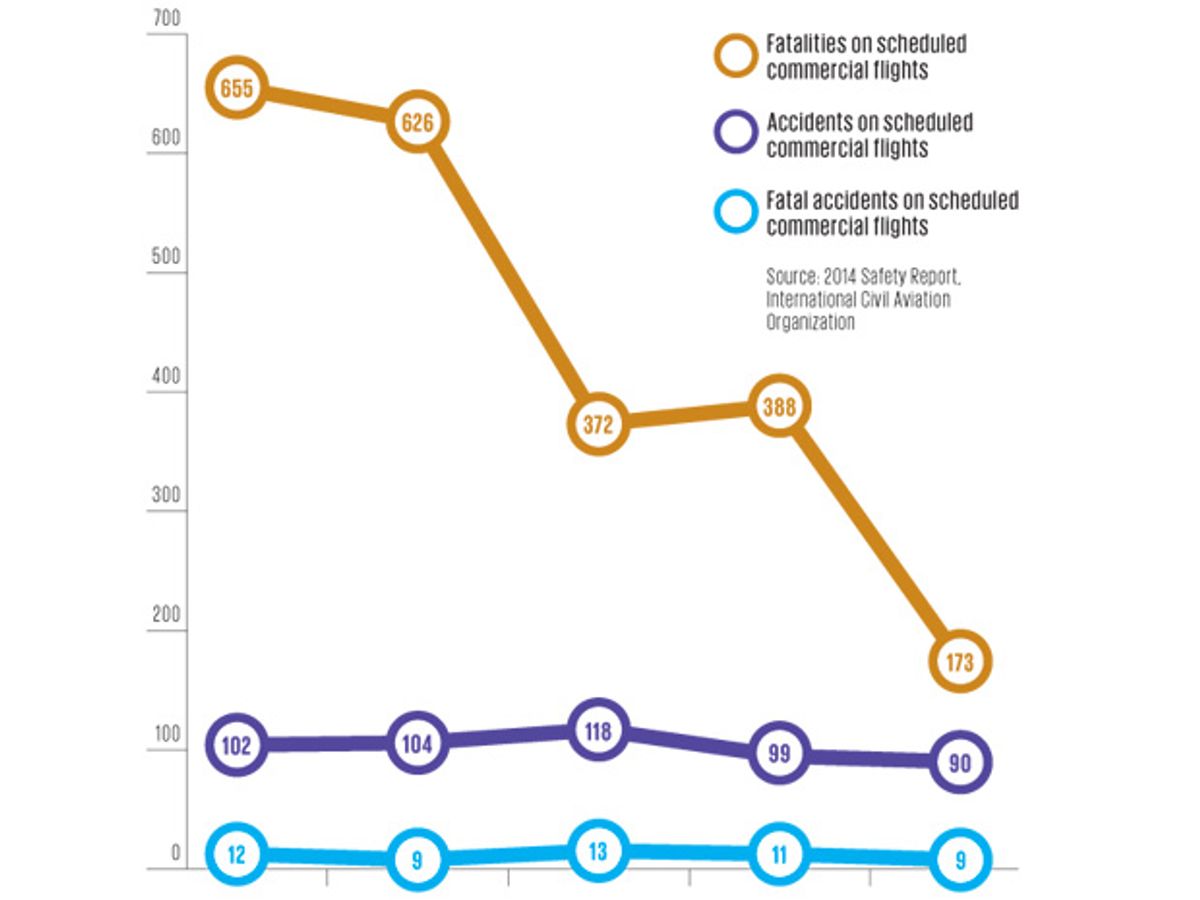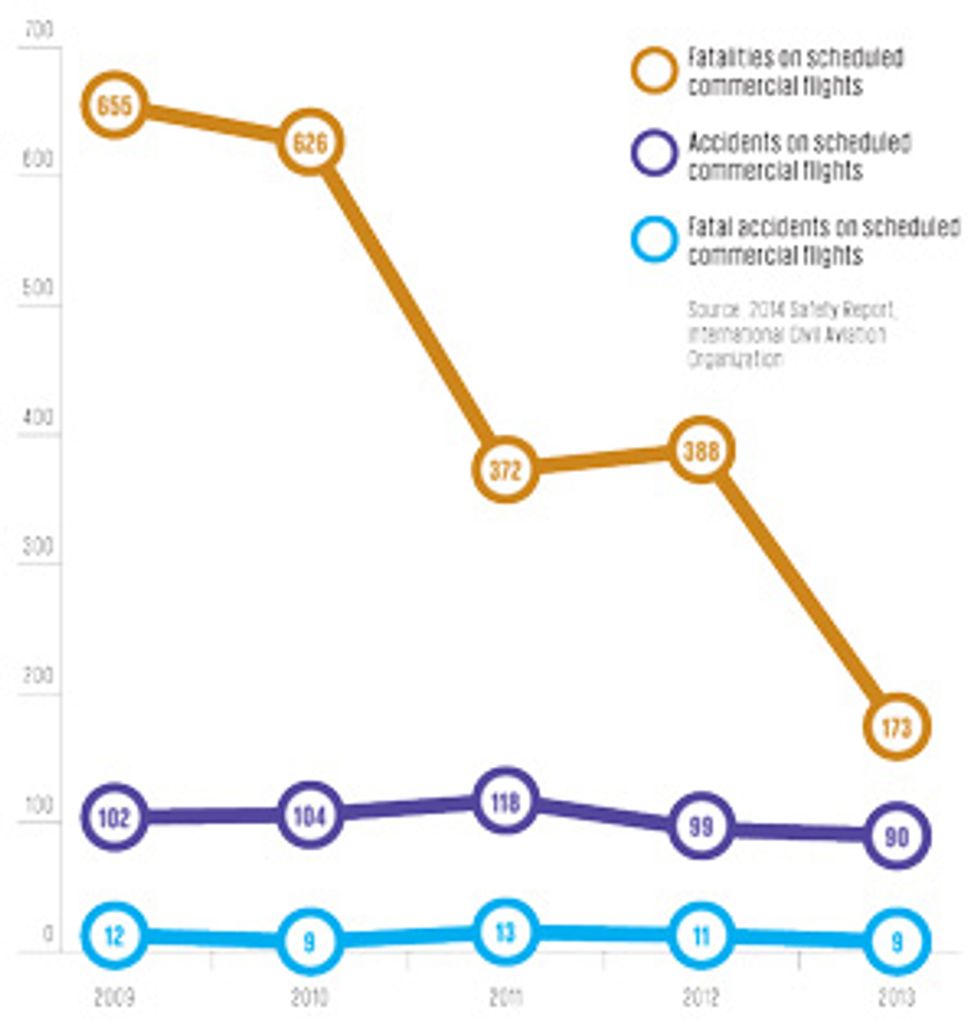You might think 2014 was a bad year for flying. There were four highly publicized accidents—the still-mysterious disappearance of Malaysia Airlines Flight 370 in March, the shooting down of Malaysia Airlines Flight 17 over Ukraine in July, AirAsia Flight QZ8501 falling into the Java Sea in December, and finally, in July, the Air Algérie Flight 5017 crash in Mali, for a total of 815 dead.
But according to Ascend, the consulting branch of Flightglobal that monitors aircraft accidents, 2014 in fact had the best accident rate in history: one fatality per 2.38 million flights, compared to the previous best of one per 2.37 million in 2012. True, Ascend did not count the downing of MH Flight 17, which was an act of war, not an accident.
In any case, it’s better to personalize the problem by putting it in terms of the risk per passenger per hour of flight. The necessary data are in the annual safety report [PDF] by the International Civil Aviation Organization, which covers large jetliners as well as smaller commuter planes.
In 2013, 32.1 million domestic and international flights carried 3.1 billion people, logged 5.8 trillion passenger-kilometers, and experienced 90 accidents, causing 173 fatalities. With the mean flight time at about 2.2 hours, this implies roughly 6.8 billion of passenger-hours or 2.5 × 10–8 fatalities per person per hour in the air. For large jetliners—dominated by Airbuses and Boeings and regional jets made by Canada’s Bombardier and Brazil’s Embraer—the risk that year was just 1 × 10–8. In 2014, large jetliner accidents (excluding the MH 17) would have pushed the latter rate to about 8 × 10–8, but the mean for the past decade remains at historic lows.
In short, flying has never been safer.
The obvious measuring stick is general mortality, the annual death rate per 1,000 people. In affluent nations that rate now ranges between 7 and 11; I will use 9 as the mean. Because the year has 8,760 hours, this average mortality prorates to 0.000001 or 1 × 10–6 deaths per person per hour of living. This means that the average additional chance of dying while flying is just 1/100th of the risk of simply being alive. Smoking risks are 100 times as high; ditto for driving in a car.
Obviously, age-specific mortality for older people is much higher [PDF]. For individuals of my age group—I’m 71—it is about 25 per 1,000 or 3 × 10–6 per hour (that means that of a million of us, three will die every hour). In 2014, I flew more than 100,000 kilometers, spending more than 100 hours aloft in large jets belonging to four major airlines whose last fatal accidents were, respectively, in 1983, 1993, 1997, and 2000. In every hour aloft the probability of my demise wasn’t even 1 percent higher than it would have been had I stayed on the ground.
Of course, I’ve had white-knuckle moments. The most recent one was in October 2014, when my Air Canada Boeing 767 headed into the turbulent fringes of a megatyphoon that was crossing over Japan.
But I never forget that quiet hospital rooms are what should really be avoided: The latest assessment shows that preventable medical errors push the risk of premature death to at least 5 × 10–5 and perhaps as high as 1 × 10–4 per every hour of hospital stay, easily more than doubling or even tripling the probability of dying for those of my age group who cannot stay out of a hospital. So keep on flying, and avoid hospitals!

